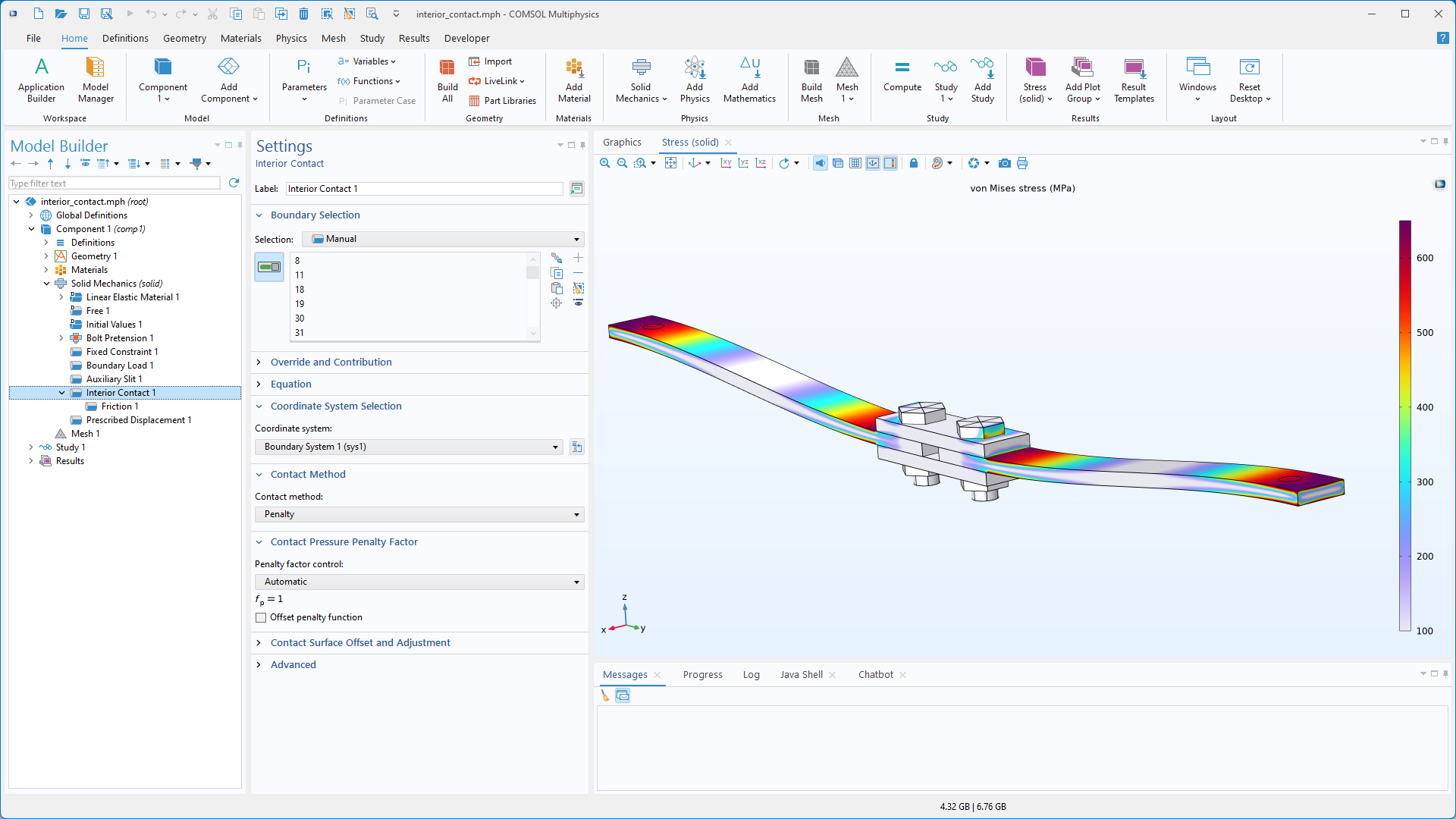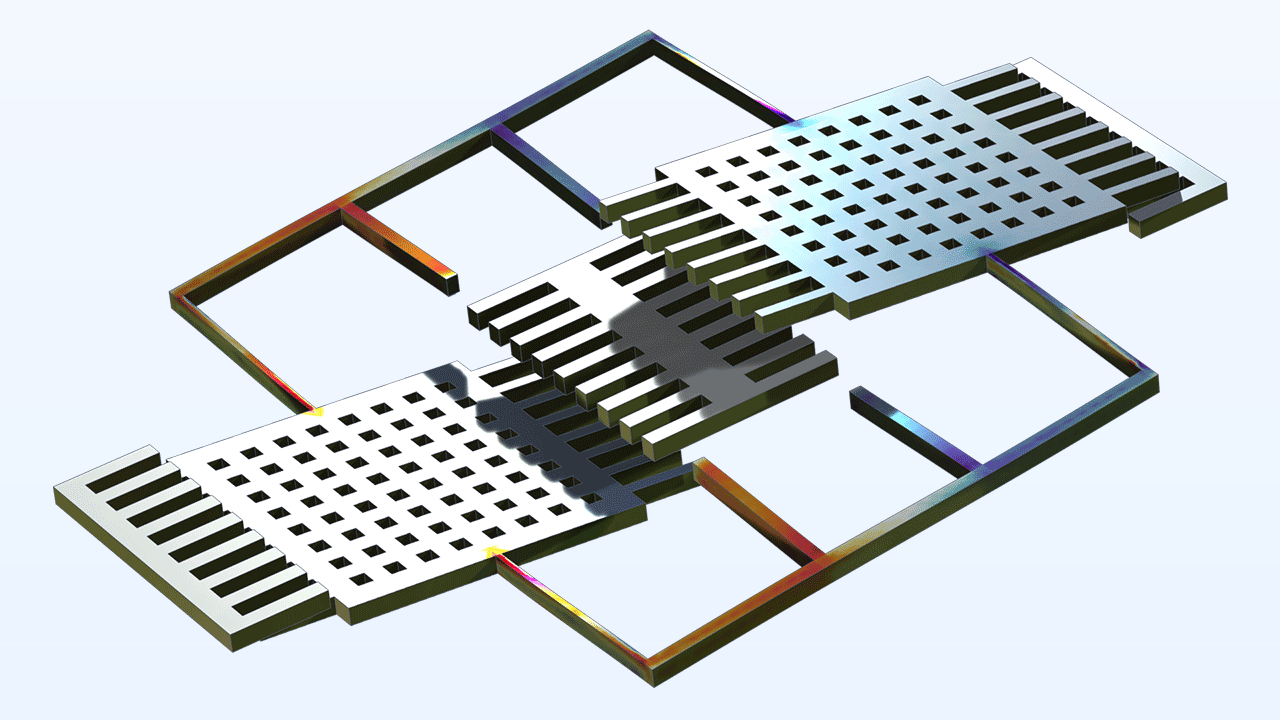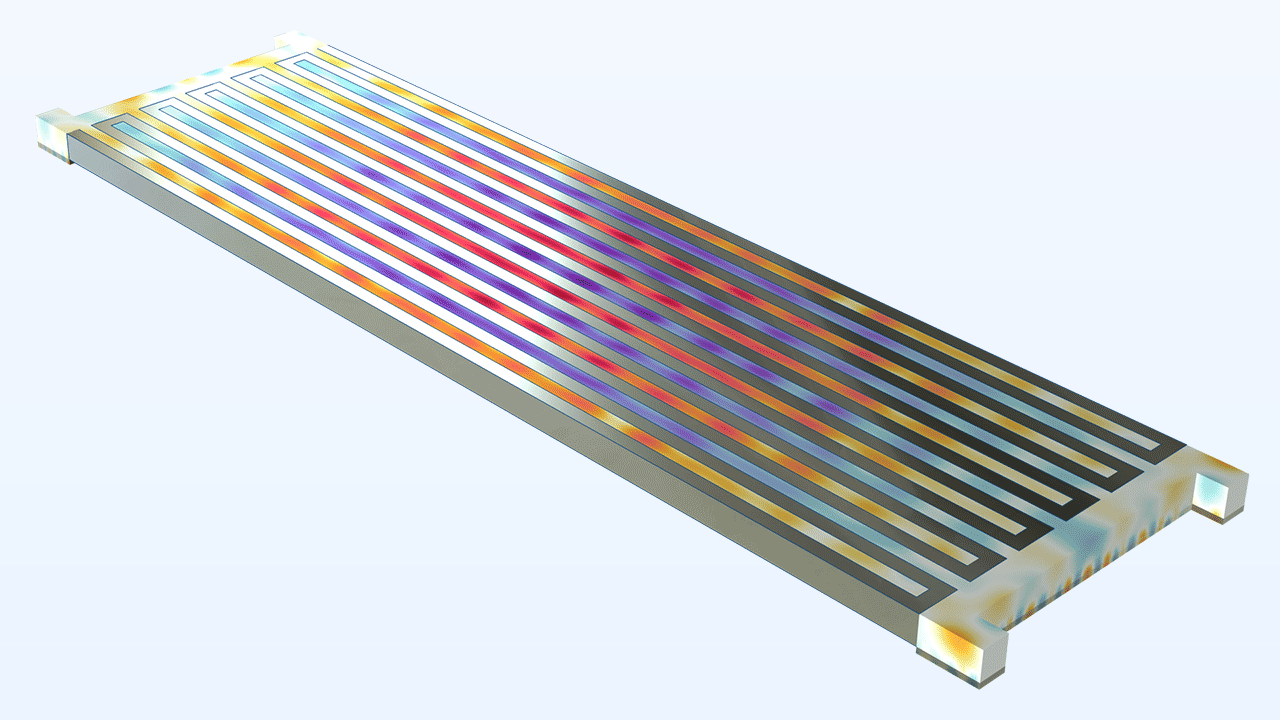MEMS Module Updates
New Formulation for Electrostatics
For electrostatic analysis, a new equation formulation delivers more accurate electrostatic force calculations, which is particularly useful when modeling MEMS devices such as accelerometers and gyroscopes. By directly solving for the electric displacement field flux, this approach improves accuracy in geometries with sharp corners, enabling more practical force evaluations. Unlike the traditional potential-based formulation, the new method uses a mixed formulation technique, solving two equations — one for the electric displacement field (D) and another for the electric potential (V), with the latter serving as a constraint. This D–V formulation, designated as Mixed finite element, is available for both 2D and 3D modeling and is the default discretization option for the Electrostatics interface that is used with the Electromechanics multiphysics interface.
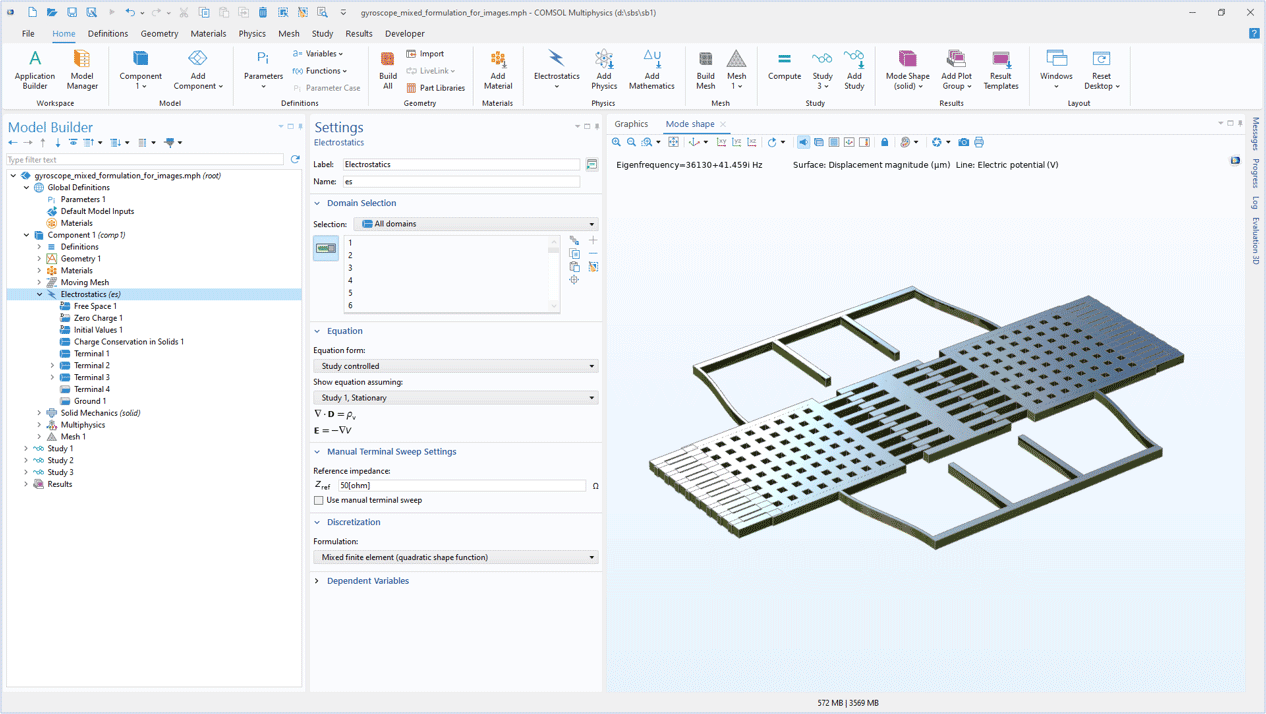
New Electromechanics Multiphysics Interfaces
The new Electromechanics, Shell and Electromechanics, Membrane interfaces simplify modeling the deformation of thin structures, such as microphone membranes, influenced by electrostatic forces. These interfaces automatically include the Electromechanics, Boundary multiphysics coupling for seamless integration with shell or membrane elements, and they use the Electrostatics interface to model the electric field. Demonstrated in the Brüel & Kjær 4134 Condenser Microphone and Axisymmetric Condenser Microphone tutorial models, these interfaces also require the Structural Mechanics Module.
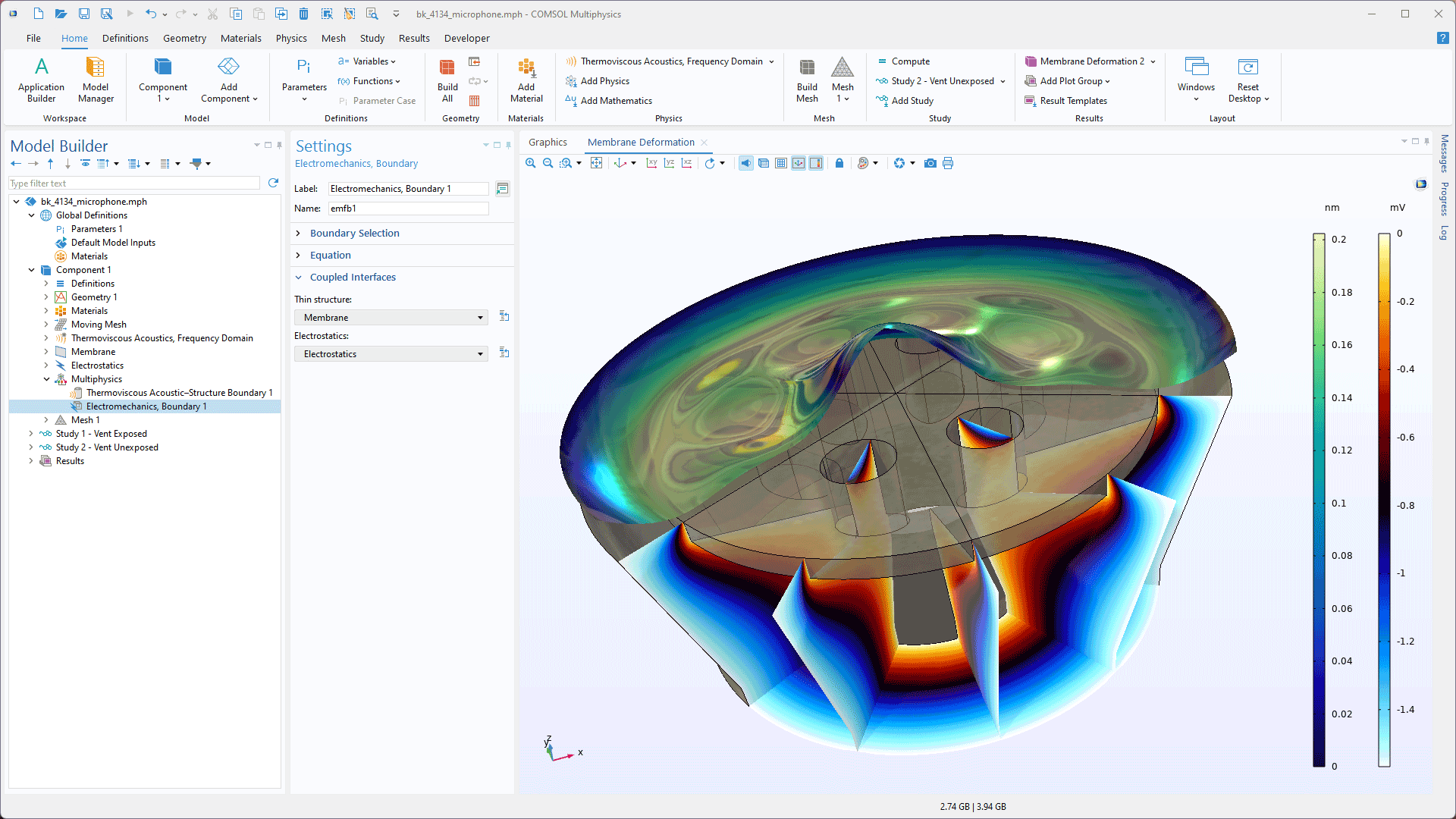
Shrinkage and Swelling Multiphysics Coupling
For modeling volume changes induced by diffusion, a new Shrinkage and Swelling multiphysics coupling that bidirectionally connects the Transport in Solids and Solid Mechanics interfaces has been added. This new coupling can be used to simulate the effects of concentration changes on volume and how stresses may affect diffusion. This is useful, for example, in batteries, where very large volume changes can occur due to ion transport.
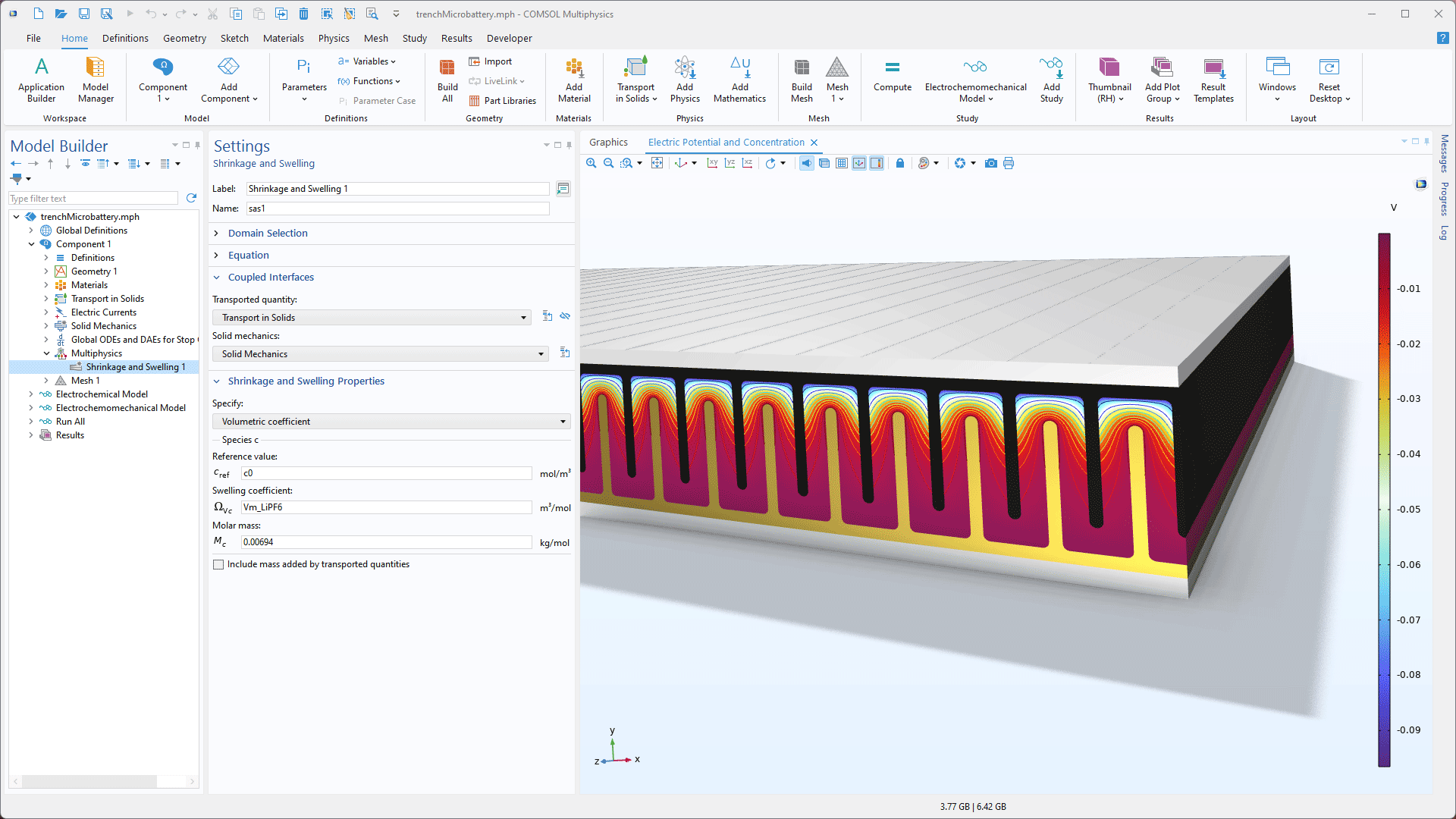
Contact Formulation for Interior Boundaries
A new Interior Contact feature has been added to the Solid Mechanics interface that makes it possible to include contact conditions such as friction, adhesion, and decohesion to internal boundaries. With this formulation, contact pairs and assemblies are not required and the analysis can be geometrically linear. This feature can be used for modeling applications such as bolted joints and boundaries separated by decohesion.
New Default Free Space Feature
A new default feature, Free Space, has been added to the Electrostatics interface. This feature defines the physical conditions near the modeled device, typically in air or vacuum. The feature serves as a starting point for further refinement, allowing additional features — such as Charge Conservation in Solids — to be added to locally specify material properties and excitation methods.
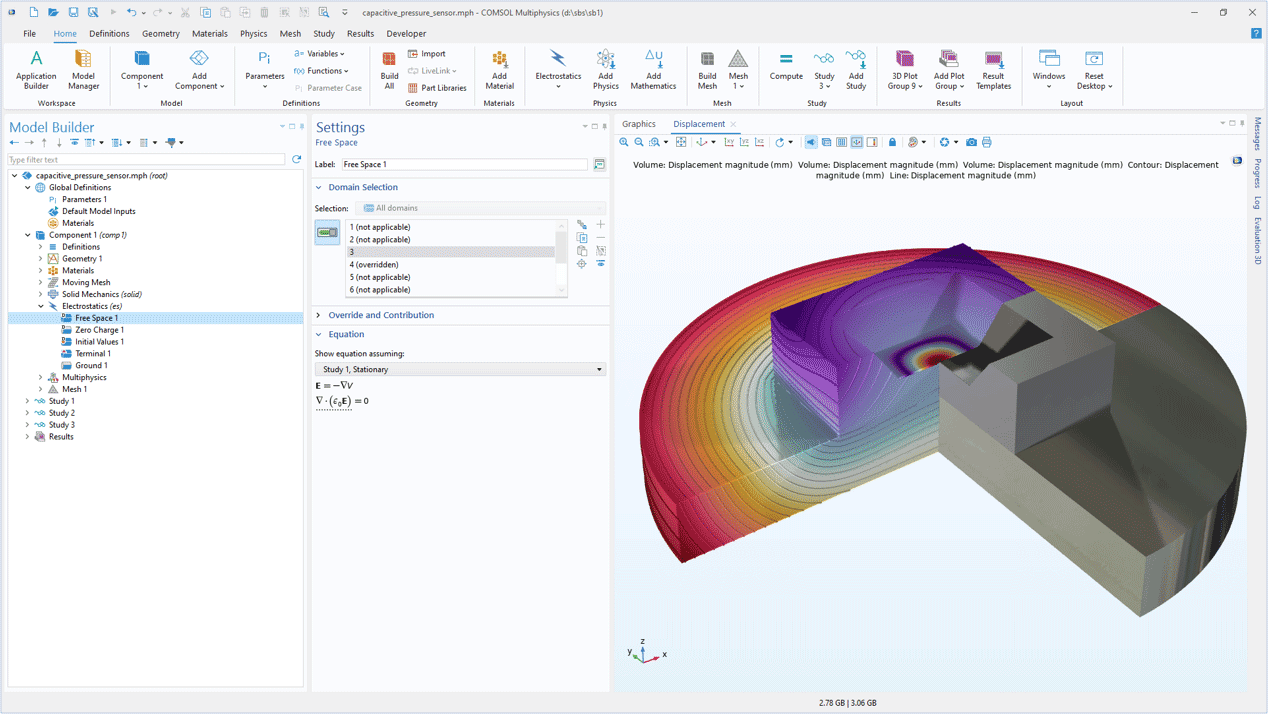
Composites Material Library Folder
The new built-in folder for Composites is divided into three groups of materials: fiber constituents, matrix constituents, and laminae. This functionality makes it easier to set up models with common types of composite plies.
New Tutorial Models
COMSOL Multiphysics® version 6.3 brings two new tutorial models to the MEMS Module.
Micromachined Gyroscope with Mixed Formulation
Aluminum Nitride Lamb Wave Resonator — Layered Shell Version*
Application Library Title:
aln_lamb_wave_resonator_layered
Download from the Application Gallery
*Requires the Composite Materials Module

